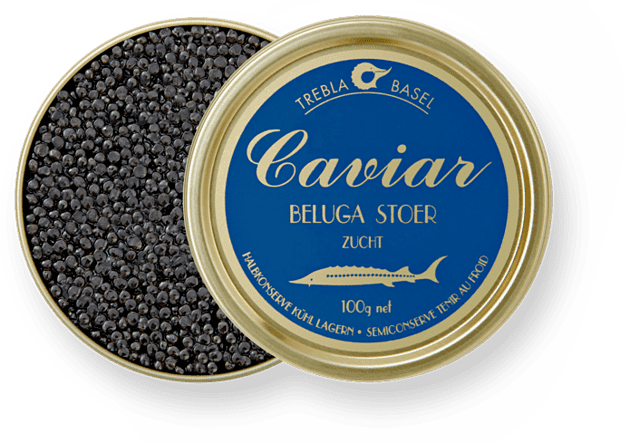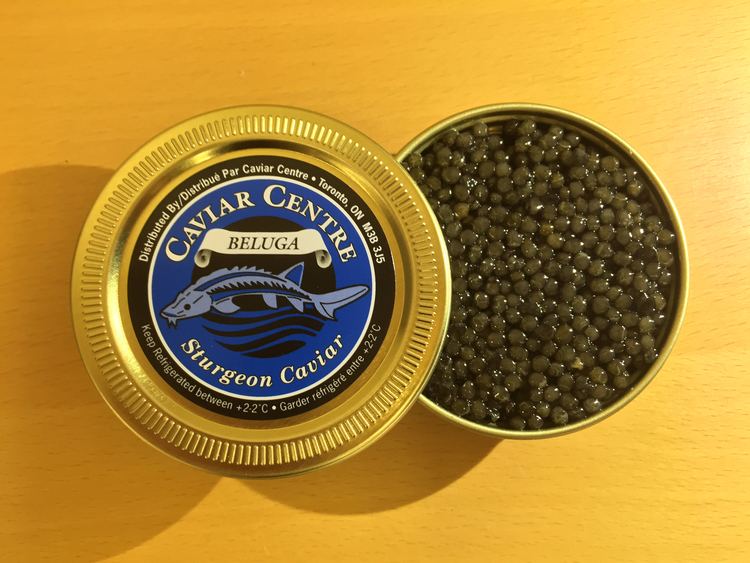Similar Roe, Sturgeon, Red caviar, Caviar, Sockeye salmon | ||
Beluga caviar is black gold munchies guide to tehran part 3 3
Beluga caviar is caviar consisting of the roe (or eggs) of the beluga sturgeon Huso huso. It is found primarily in the Caspian Sea, the world’s largest salt-water lake, which is bordered by Iran and the CIS countries of Azerbaijan, Kazakhstan, Russia, and Turkmenistan. It can also be found in the Black Sea basin and occasionally in the Adriatic Sea. Beluga caviar is the most expensive type of caviar, with market prices, at the beginning of the millennium, ranging from $7,000 to $10,000/kg ($3,200 to $4,500/lb).
Contents
- Beluga caviar is black gold munchies guide to tehran part 3 3
- The most expensive caviar in the world beluga caviar
- Harvesting
- Service
- References
The most expensive caviar in the world beluga caviar
Harvesting

The Beluga sturgeon is currently considered to be critically endangered, causing the United States Fish and Wildlife Service to ban in 2005 the importation of Beluga caviar which originated in the Caspian Sea and Black Sea basin. In 2006, the Convention on International Trade in Endangered Species (CITES) suspended all trade made with the traditional caviar-producing regions of the Caspian and Black Seas (Beluga, Ossetra and Sevruga), (Azerbaijan, Bulgaria, China, Iran, Kazakhstan, Romania, Russia, Serbia and Montenegro, Turkmenistan, and Ukraine) due to the producing countries' failure to apply international regulations and recommendations. Caviar from Iran is exempted from the ban. Iran is considered by CITES to practice effective conservation and policing of its fisheries. In January 2007, this ban was partly lifted, allowing the sale of 96 tons of caviar, 15 percent below the official 2005 level. CITES maintained the 2007 quotas for 2008, drawing criticism for doing little to protect the declining sturgeon population.
The Beluga sturgeon can take up to 20 years to reach maturity. The fish harvested for caviar are often nearly 900 kg (2,000 lb). The eggs themselves are the largest of the commonly used roes, and range in color from dark gray (almost black) to light gray, with the lighter colors coming from older fish, and being the most valued. A pearly white variety, called Almas (Persian for diamond), taken from a centennial female sturgeon, is the rarest type of Beluga available, with an extremely small production and prices reaching almost £25,000 ($35,300) per kilogram.

Any additions by producers diminish the value of the roe, and the caviar usually reaches the market without any additions or processing whatsoever.
Service
As with most caviars, Beluga is usually handled with a caviar spoon made of mother of pearl, bone, or other non-metallic material, as metal utensils tend to impart an unwelcome metallic taste to the delicate and expensive roe. Beluga caviar is usually served by itself on toast, unlike other less expensive caviars that can be served in a variety of ways, including hollowed and cooked new potatoes, on a blini, or garnished with sour cream, crème fraîche, minced onion or minced hard boiled egg whites. These items can, however, be served with Beluga as palate cleansers.
